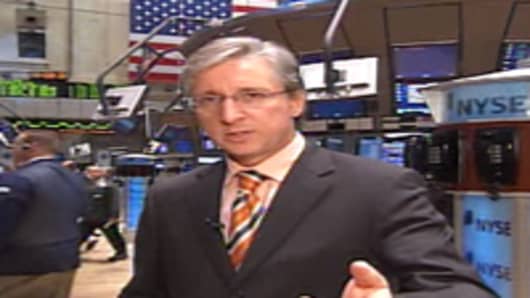CNBC's Bob Pisani reports on what traders were telling him at midday:
Things a bit calmer today: volatility much lower, volume still heavy, but not as heavy as last 6 or 7 days. Three stocks advancing for every two declining.
Post-mortems starting to emerge on what has happened in the last two weeks. Everyone agrees on why it happened: a panic at the prime broker level. Any speculative leverage bond was marked down and holders of the debt were faced with margin calls and forced to come up with more collateral. So traders had to sell stock to put up more collateral.
Bulls desperately need to put together a couple of "up" days on respectable volume to really tamp down selling into rallies. Even then new news on housing/credit can drop the market.
Bulls are arguing that S&P trading is at under 16-times forward earnings and the market is arguably a bargain. Bears say that the financing cost hurdle is now higher and slow growth may erode profits.
Bears also argue that the loss of LBO is a major blow to stocks, since it removes one of the natural buyers. They are buyers, but damage may not be as great as thought. The big buyers have been:
a) M&A guys. In July, there were 40 cash M&A deals valued at $72 billion. That was the fourth highest in dollar terms, and the highest ever in terms of numbers. (TrimTabs.com). 65% (or 26 deals) were strategic, the rest were LBOs.
Bottom line: LBOs may slow, but strategic buyers are still out there and may be even more aggressive with the LBO guys on the side.
b) Buybacks. 136 buybacks were announced, the second highest ever in a month, surpassed only by buybacks announced in the wake of 9/11 (TrimTabs.com).



